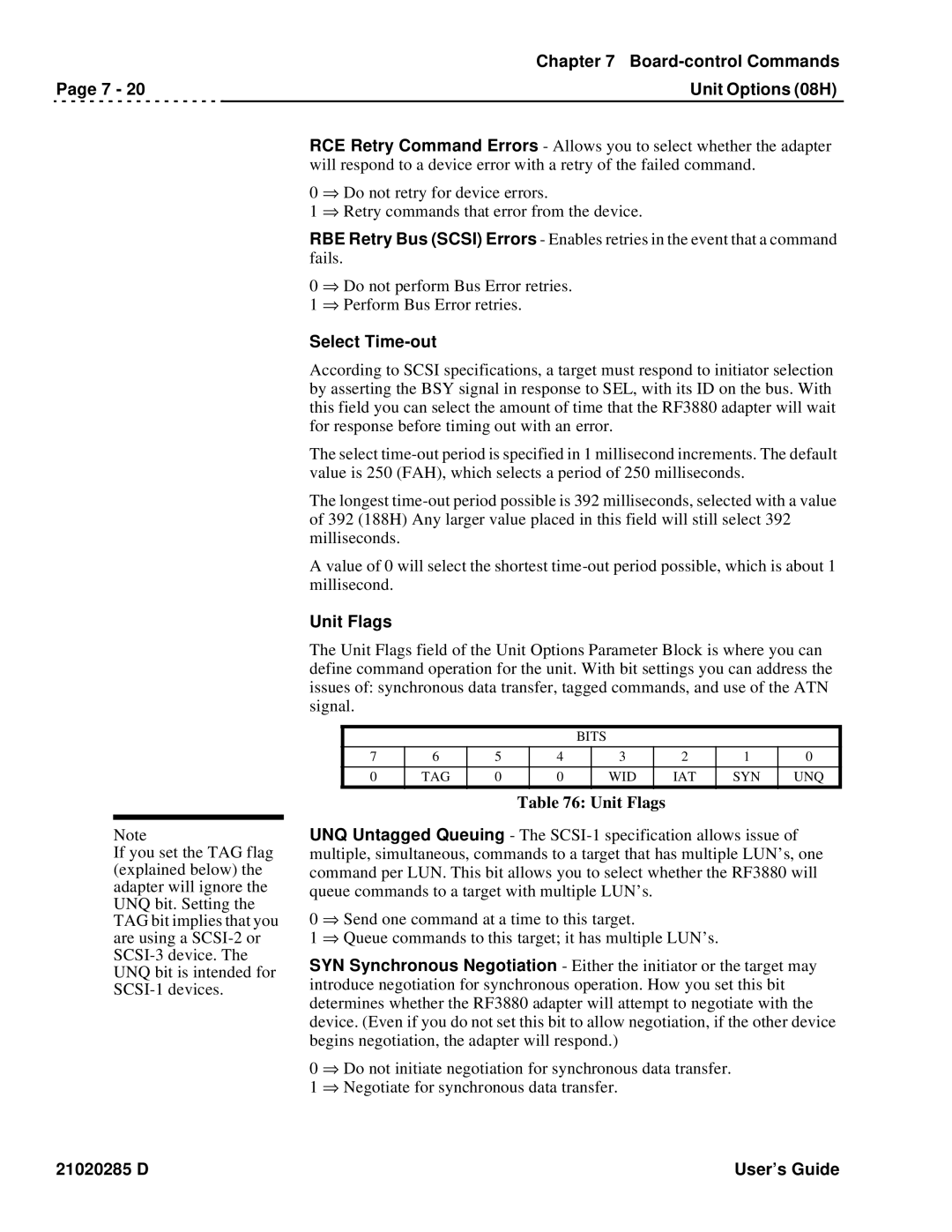
Chapter 7 Board-control Commands
Page 7 - 20 |
| Unit Options (08H) |
Note
If you set the TAG flag (explained below) the adapter will ignore the UNQ bit. Setting the TAG bit implies that you are using a
RCE Retry Command Errors - Allows you to select whether the adapter will respond to a device error with a retry of the failed command.
0 ⇒ Do not retry for device errors.
1 ⇒ Retry commands that error from the device.
RBE Retry Bus (SCSI) Errors - Enables retries in the event that a command fails.
0 ⇒ Do not perform Bus Error retries.
1 ⇒ Perform Bus Error retries.
Select Time-out
According to SCSI specifications, a target must respond to initiator selection by asserting the BSY signal in response to SEL, with its ID on the bus. With this field you can select the amount of time that the RF3880 adapter will wait for response before timing out with an error.
The select
The longest
A value of 0 will select the shortest
Unit Flags
The Unit Flags field of the Unit Options Parameter Block is where you can define command operation for the unit. With bit settings you can address the issues of: synchronous data transfer, tagged commands, and use of the ATN signal.
BITS
7 | 6 | 5 | 4 | 3 | 2 | 1 | 0 |
|
|
|
|
|
|
|
|
0 | TAG | 0 | 0 | WID | IAT | SYN | UNQ |
Table 76: Unit Flags
UNQ Untagged Queuing - The
0 ⇒ Send one command at a time to this target.
1 ⇒ Queue commands to this target; it has multiple LUN’s.
SYN Synchronous Negotiation - Either the initiator or the target may introduce negotiation for synchronous operation. How you set this bit determines whether the RF3880 adapter will attempt to negotiate with the device. (Even if you do not set this bit to allow negotiation, if the other device begins negotiation, the adapter will respond.)
0 ⇒ Do not initiate negotiation for synchronous data transfer.
1 ⇒ Negotiate for synchronous data transfer.
21020285 D | User’s Guide |
